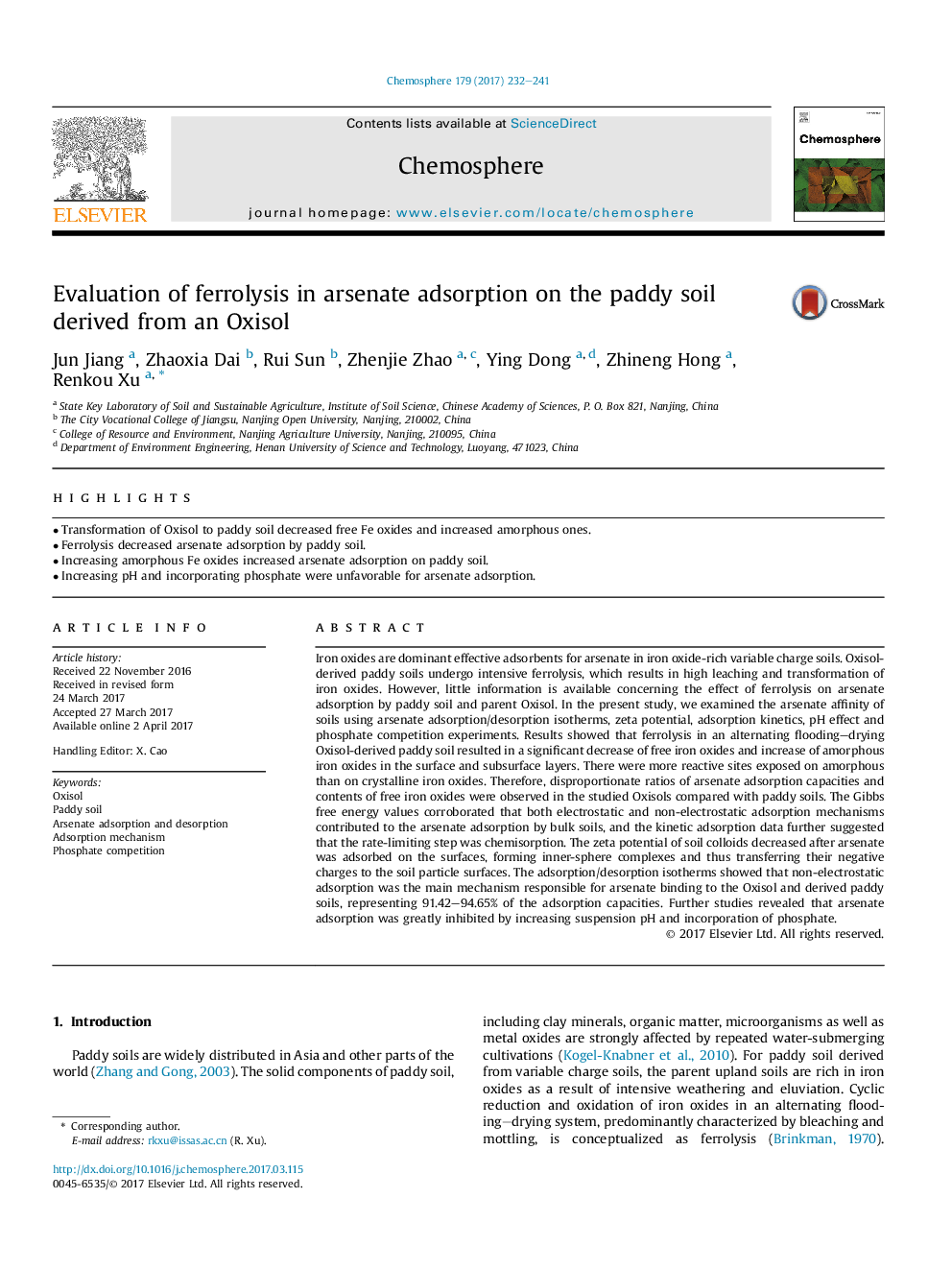| کد مقاله | کد نشریه | سال انتشار | مقاله انگلیسی | نسخه تمام متن |
|---|---|---|---|---|
| 5746543 | 1618792 | 2017 | 10 صفحه PDF | دانلود رایگان |
- Transformation of Oxisol to paddy soil decreased free Fe oxides and increased amorphous ones.
- Ferrolysis decreased arsenate adsorption by paddy soil.
- Increasing amorphous Fe oxides increased arsenate adsorption on paddy soil.
- Increasing pH and incorporating phosphate were unfavorable for arsenate adsorption.
Iron oxides are dominant effective adsorbents for arsenate in iron oxide-rich variable charge soils. Oxisol-derived paddy soils undergo intensive ferrolysis, which results in high leaching and transformation of iron oxides. However, little information is available concerning the effect of ferrolysis on arsenate adsorption by paddy soil and parent Oxisol. In the present study, we examined the arsenate affinity of soils using arsenate adsorption/desorption isotherms, zeta potential, adsorption kinetics, pH effect and phosphate competition experiments. Results showed that ferrolysis in an alternating flooding-drying Oxisol-derived paddy soil resulted in a significant decrease of free iron oxides and increase of amorphous iron oxides in the surface and subsurface layers. There were more reactive sites exposed on amorphous than on crystalline iron oxides. Therefore, disproportionate ratios of arsenate adsorption capacities and contents of free iron oxides were observed in the studied Oxisols compared with paddy soils. The Gibbs free energy values corroborated that both electrostatic and non-electrostatic adsorption mechanisms contributed to the arsenate adsorption by bulk soils, and the kinetic adsorption data further suggested that the rate-limiting step was chemisorption. The zeta potential of soil colloids decreased after arsenate was adsorbed on the surfaces, forming inner-sphere complexes and thus transferring their negative charges to the soil particle surfaces. The adsorption/desorption isotherms showed that non-electrostatic adsorption was the main mechanism responsible for arsenate binding to the Oxisol and derived paddy soils, representing 91.42-94.65% of the adsorption capacities. Further studies revealed that arsenate adsorption was greatly inhibited by increasing suspension pH and incorporation of phosphate.
Journal: Chemosphere - Volume 179, July 2017, Pages 232-241
